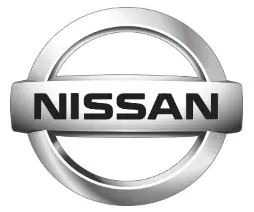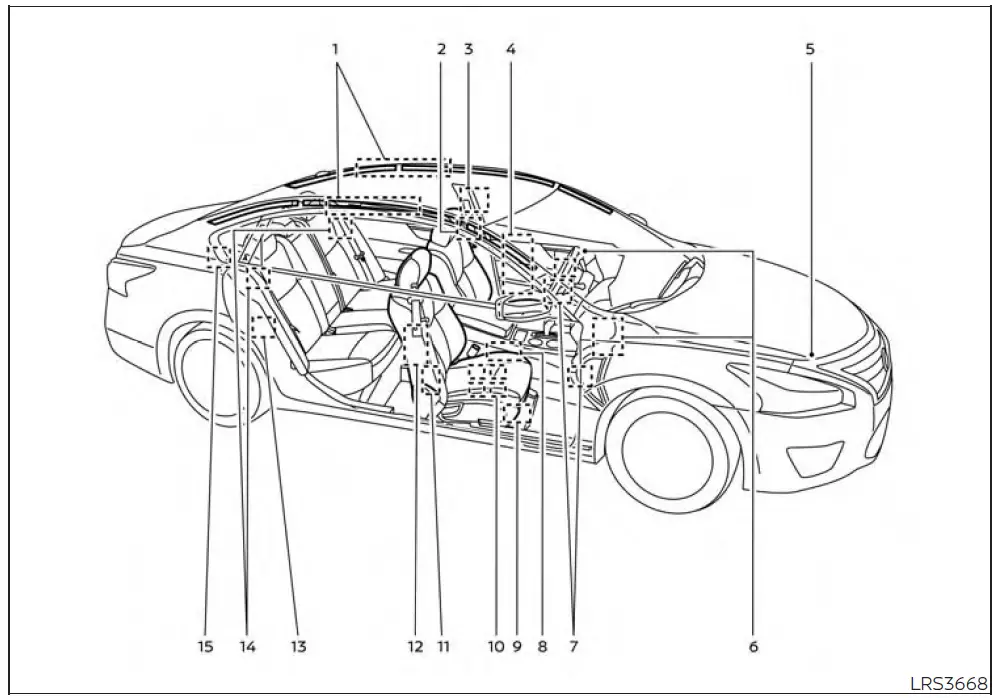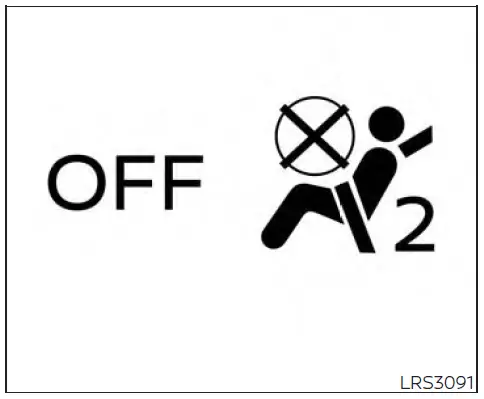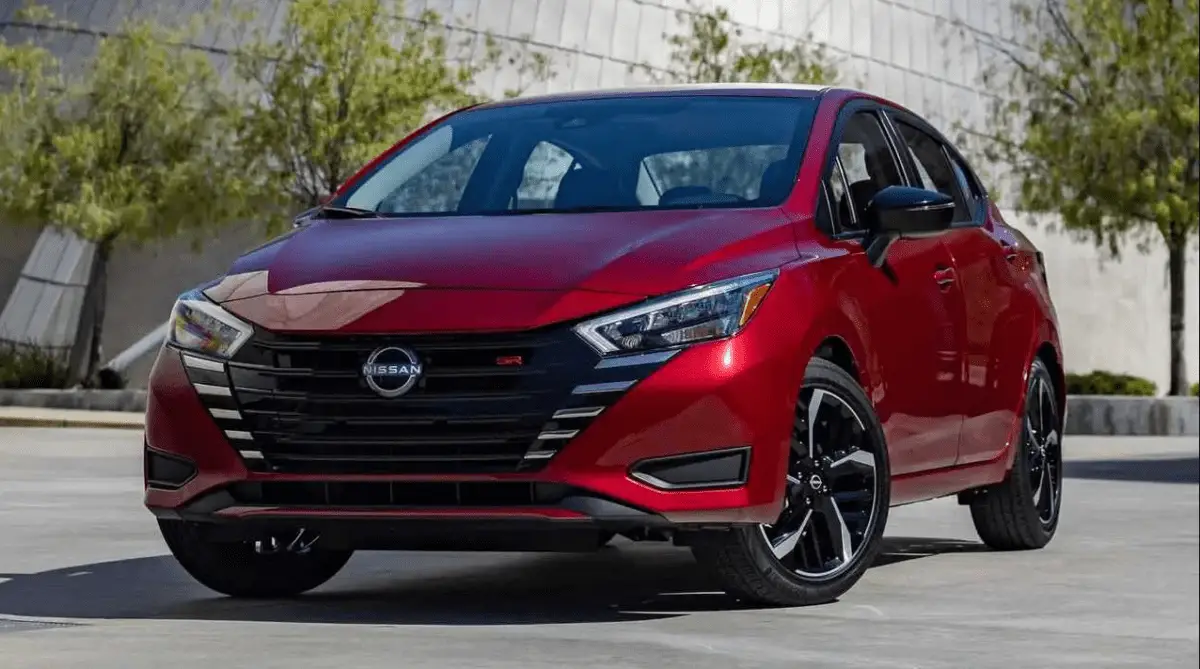
2024 Nissan Versa User Manual
In the subcompact car class, the 2024 Nissan Versa is still a dependable and effective option, providing a desirable balance of cost, functionality, and contemporary features. The 2024 Versa builds on its reputation for offering outstanding value for customers on a tight budget by showcasing a modern, aerodynamic design. The interior of the car is tastefully decorated, with cozy seating and an easy-to-use multimedia system. The Versa usually has a fuel-efficient engine under the hood that provides excellent gas mileage for both city and interstate travel. For those looking for a functional and affordable car without sacrificing quality or beauty, the 2024 Nissan Versa is still a strong choice thanks to its affordable price and a solid reputation for dependability.
Overview
- Roof-mounted curtain side-impact and rollover supplemental airbag
- Seat belt with pretensioner(s) (front seats)
- Shoulder belt height adjustment (front seats)
- Side-impact pressure sensor (driver’s side shown; front passenger side similar)
- Crash zone sensor
- Supplemental front-impact air bag modules
- Driver and front passenger supplemental knee airbags
- Airbag Control Unit (ACU)
- Occupant classification system control unit
- Occupant classification sensor (weight sensor – located in front passenger cushion frame)
- Side satellite sensor (passenger’s side shown; driver side similar) (if so equipped)
- Front seat-mounted side-impact supplemental air bags (passenger’s side shown; driver side similar)
- Side satellite sensor (passenger’s side shown; driver side similar)
- Rear outboard seat-mounted side-impact supplemental airbags
- Seat belt with pretensioner(s) (rear seats)

WARNING
To ensure proper operation of the passenger’s NISSAN Advanced Air Bag System, please observe the following items.
- Do not allow a passenger in the rear seat to push or pull on the seatback pocket.
- Do not place heavy loads heavier than 9.1 lbs. (4 kg) on the seatback, head restraint/headrest or in the seatback pocket.
- Make sure that there is nothing pressing against the rear of the seatback, such as a child restraint installed in the rear seat or an object stored on the floor.
- Make sure that there is no object placed under the front passenger seat.
- Make sure that there is no object placed between the seat cushion and the centre console or between the seat cushion and the door.
- If a forward-facing child restraint is installed in the front passenger seat, do not position the front passenger seat so the child restraint contacts the instrument panel. If the child restraint does contact the instrument panel, the system may determine the seat is occupied and the passenger airbag and front passenger supplemental knee air bag may deploy in a collision. Also, the front passenger airbag status light may not illuminate.
- Confirm the operating condition with the front passenger airbag status light.
- If you notice that the front passenger air bag status light is not operating as described in this section, get the occupant classification system checked. It is recommended that you visit a NISSAN dealer for this service.
- Until you have confirmed with a dealer that your front passenger seat occupant classification system is working properly, position the occupants in the rear seating positions.
- Do not position the front passenger seat so it contacts the rear seat. If the front seat does contact the rear seat, the airbag system may determine a sensor malfunction has occurred the front passenger air bag status light may illuminate and the supplemental air bag warning light may flash.
This vehicle is equipped with the NISSAN Advanced Air Bag System for the driver and front passenger seats. This system is designed to meet certification requirements under U.S. regulations. It is also permitted in Canada. However, all of the information, cautions and warnings in this manual still apply and must be followed. The driver’s supplemental front-impact air bag is located in the centre of the steering wheel. The front passenger supplemental front-impact air bag is mounted in the dashboard above the glove box. The front airbags are designed to inflate in higher-severity frontal collisions, although they may inflate if the forces in another type of collision are similar to those of a higher-severity frontal impact. They may not inflate in certain frontal collisions. Vehicle damage (or lack of it) is not always an indication of proper front airbag system operation. The NISSAN Advanced Air Bag System monitors information from the crash zone sensor, the Air bag Control Unit (ACU), seat belt buckle sensors and occupant classification sensor (weight sensor). Inflator operation is based on the severity of a collision and seat belt usage for the driver.
For the front passenger, the occupant classification sensors are also monitored. Based on information from the sensors, only one front air bag may inflate in a crash, depending on the crash severity and whether the front occupants are belted or unbelted. Additionally, the front passenger air bag and front passenger supplemental knee air bag may be automatically turned OFF under some conditions, depending on the weight detected on the front passenger seat and how the seat belt is used. If the front passenger air bag and front passenger supplemental knee air bag are OFF, the front passenger air bag status light will be illuminated. For additional information, see “Front passenger air bag and status light” (P. 1-51). One front air bag inflating does not indicate improper performance of the system. If you have any questions about your air bag system, it is recommended that you visit a NISSAN dealer.
If you are considering modification of your vehicle due to a disability, you may also contact NISSAN. Contact information is contained in the front of this Owner’s Manual. When a front air bag inflates, a fairly loud noise may be heard, followed by the release of smoke. This smoke is not harmful and does not indicate a fire. Care should be taken to not inhale it, as it may cause irritation and choking. Those with a history of a breathing condition should get fresh air promptly. Front airbags, along with the use of seat belts, help to cushion the impact force on the face and chest of the front occupants. They can help save lives and reduce serious injuries. However, an inflating front air bag may cause facial abrasions or other injuries. Front airbags do not provide restraint to the lower body. Even with NISSAN air bags, seat belts should be correctly worn and the driver and front passenger seated upright as far as practical away from the steering wheel or instrument panel. The front air bags inflate quickly in order to help protect the front occupants. Because of this, the force of the front air bag inflating can increase the risk of injury if the occupant is too close to, or is against, the front air bag module during inflation. The front airbags deflate quickly after a collision.
The front airbags operate only when the ignition switch is placed in the ON position. After placing the ignition switch in the ON position, the supplemental air bag warning light illuminates. The supplemental air bag warning light will turn off after about 7 seconds if the system is operational.

Front passenger airbag and status light
WARNING
The front passenger airbag and front passenger supplemental knee airbag are designed to automatically turn OFF under some conditions. Read this section carefully to learn how it operates. Proper use of the seat, seat belt, and child restraints is necessary for the most effective protection. Failure to follow all instructions in this manual concerning the use of seats, seat belts, and child restraints can increase the risk or severity of injury in an accident.
Status light
The front passenger seat is equipped with an occupant classification sensor (weight sensor) that turns the front passenger airbag and front passenger supplemental knee air bag on or off depending on the weight applied to the front passenger seat. The status of the front passenger airbag (ON or OFF) is indicated by the front passenger airbag status light which is located on the instrument panel. After the ignition switch is placed in the “ON” position, the front passenger air bag status light on the instrument panel illuminates for about 7 seconds and then turns off or remains illuminated depending on the front passenger seat occupied status. The light operates as follows:
- Unoccupied front passenger’s seat: The light is ON and the front passenger airbag and front passenger supplemental knee air bag are OFF and will not inflate in a crash.
- Front passenger seat occupied by a small adult, child or child restraint as outlined in this section: The light illuminates to indicate that the front passenger airbag and front passenger supplemental knee airbag are OFF and will not inflate in a crash.
- Occupied front passenger seat and the passenger meets the conditions as outlined in this section: The light is OFF to indicate that the front passenger airbag and front passenger supplemental knee airbag are operational. In addition to the above, certain objects placed on the front passenger seat may also cause the light to operate as described above depending on their weight.
Front passenger airbag
The front passenger airbag is designed to automatically turn OFF when the vehicle is operated under some conditions as described below in accordance with U.S. regulations. If the front passenger airbag is OFF, it will not inflate in a crash. The driver air bag and other airbags in your vehicle are not part of this system.
The purpose of the regulation is to help reduce the risk of injury or death from an inflating air bag to certain front passenger seat occupants, such as children, by requiring the air bag to be automatically turned OFF. Certain sensors are used to meet the requirements.
The occupant classification sensor in this vehicle is a weight sensor. It is designed to detect an occupant and objects on the seat by weight. For example, if a child is in the front passenger seat, the NISSAN Advanced Air Bag System is designed to turn the front passenger air bag OFF in accordance with the regulations. Also, if a child restraint of the type specified in the regulations is on the seat, its weight and the child’s weight can be detected and cause the airbag to turn OFF.
Front passenger seat adult occupants who are properly seated and using the seat belt as outlined in this manual should not cause the front passenger air bag and front passenger supplemental knee air bag to be automatically turned OFF. For small adults it may be turned OFF, however, if the occupant takes his/her weight off the seat cushion (for example, by not sitting upright, by sitting on the edge of the seat, or by otherwise being out of position), this could cause the sensor to turn the air bag OFF. Always be sure to be seated and wearing the seat belt properly for the most effective protection by the seat belt and supplemental air bag. NISSAN recommends that pre-teens and children be properly restrained in a rear seat. NISSAN also recommends that appropriate child restraints and booster seats be properly installed in the rear seat. If this is not possible, the occupant classification sensor is designed to operate as described above to turn the front passenger air bag and front passenger supplemental knee air bag OFF for specified child restraints as required by the regulations. Failing to properly secure child restraints and to use the ALR mode may allow the restraint to tip or move in a collision or sudden stop. This can also result in the front passenger air bag and front passenger supplemental knee air bag inflating in a crash instead of being OFF.
If the front passenger seat is not occupied, the front passenger air bag and front passenger supplemental knee air bag are designed not to inflate in a crash. However, heavy objects placed on the seat could result in air bag inflation, because of the object’s weight detected by the occupant classification sensor. Other conditions could also result in air bag inflation, such as if a child is standing on the seat, or if two children are on the seat, contrary to the instructions in this manual. Always be sure that you and all vehicle occupants are seated and restrained properly.
Using the front passenger air bag status light, you can monitor when the front passenger air bag and front passenger supplemental knee air bag are automatically turned OFF with the seat occupied. The light will illuminate when the front passenger seat is unoccupied.
If an adult occupant is in the seat but the front passenger air bag status light is illuminated (indicating that the front passenger air bag and front passenger supplemental knee air bag are OFF), it could be that the person is a small adult, or is not sitting on the seat properly or not using the seat belt properly.
FAQs
The Nissan Versa is a subcompact car known for its affordability and fuel efficiency.
The seating capacity typically accommodates five passengers.
Trim levels for the Nissan Versa may vary, but common ones include S, SV, and SR.
The starting price can vary depending on trim level and options, so it’s best to check with the manufacturer or a dealership for specific pricing information.
Engine options can vary, but the Versa often comes with a fuel-efficient four-cylinder engine.
Fuel economy figures will depend on the specific engine and transmission options, but the Versa typically offers good gas mileage.
Common safety features may include forward collision warning, automatic emergency braking, lane departure warning, and more.
Nissan Versa models often come with both manual and automatic transmission options.
Interior features may include a touchscreen infotainment system, smartphone integration, cloth seats, and more.
Cargo space can vary, but the Versa typically provides a competitive amount of cargo room for its class.
The Versa’s compact size and fuel efficiency make it well-suited for city driving.
Many modern Nissan Versa models come equipped with advanced driver assistance systems, but the availability may vary by trim level.
In 2022, the Nissan Versa was not available in hybrid or electric versions, but Nissan’s lineup may have evolved since then.
Comparison with other subcompact cars will depend on specific features, pricing, and individual preferences. It’s a good idea to research and compare the Versa with similar models in its class.
The price of the 2024 Nissan Versa starts at $17,245 and goes up to $21,255 depending on the trim and options.
Useful Link
DownloadManuals:https://www.nissanusa.com/owners/ownership/manuals-guides.html
2023 Nissan Versa Specs, Price, Features, Mileage (Brochure)

